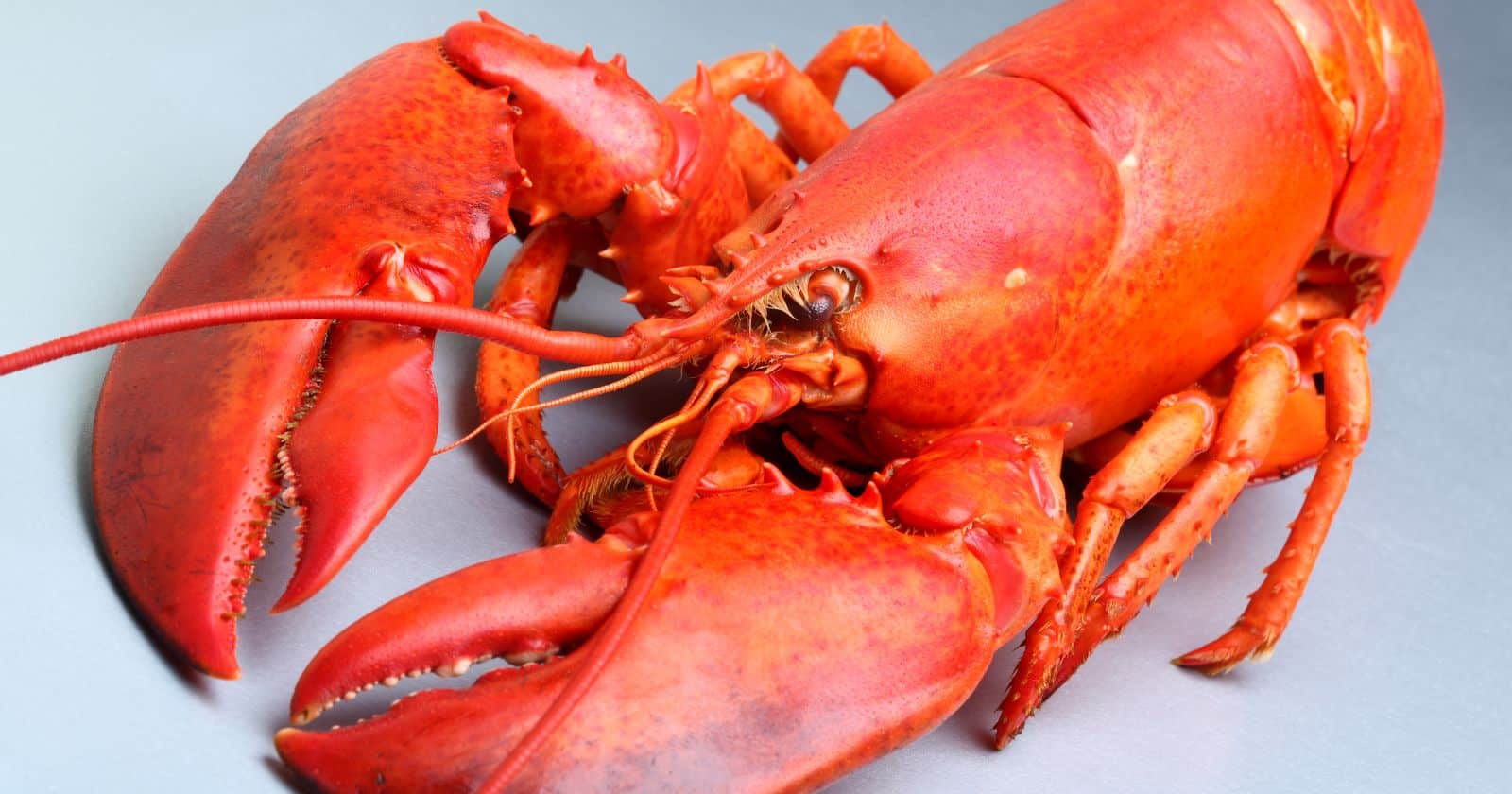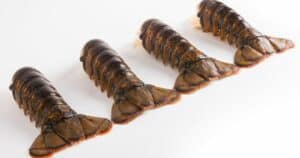If you love lobster, you know nothing is worse than getting sick from eating it. Food poisoning is a genuine concern, especially if the lobster is mushy. Not only does it ruin your meal, but it can also lead to unpleasant symptoms like nausea, vomiting, and abdominal pain.
The short answer is yes, you can get food poisoning from mushy lobster. Mushy lobster is a sign of spoilage, which means that the lobster may be dangerous to eat. Spoiled lobster can contain harmful bacteria like Vibrio, which can cause food poisoning. The symptoms of food poisoning can be severe and include nausea, vomiting, and abdominal cramps.
This blog post will look at the risks of eating mushy lobster and how to avoid getting sick. We’ll also explore different ways to prepare lobster, including butter-poaching and boiling, and how they impact the texture of the lobster.
By the end of this post, you’ll better understand how to choose and cook lobster safely so that you can enjoy this delicious seafood without any worries.
Understanding Mushy Lobster: What Causes It and What It Means
Yes, mushy lobster can make you sick! But how does it become mushy? Several factors can cause it. One is when the lobster is already dead or almost dead, and it starts to release enzymes that begin the decomposition process before cooking.
Another culprit is freezing, thawing, and refreezing the lobster, which can lead to mushy meat. Slow cooking and undercooking can also result in a naturally mushy texture. So, if you find your lobster tail disintegrating after cooking, it’s best to toss it out.
But what does it mean when your lobster is mushy? It could indicate that it needs to be fresh or that it needs to be appropriately handled during transportation or storage. While mushy lobster is not always harmful, it can spoil quickly and contain bacteria that may cause food poisoning. So, cooking your lobster correctly and ensuring it’s fresh before consuming it is essential.
If you’re wondering how to prevent mushy lobster, here are some tips:
- Always buy fresh lobster and store it correctly before cooking.
- Avoid freezing and thawing the lobster repeatedly.
- Cook your lobster within a day or two after purchase.
- Make sure to cook your lobster appropriately, neither overcooking nor undercooking it.
- Avoid slow cooking, which can cause the meat to become mushy.
If you follow these guidelines, you’re less likely to end up with mushy lobster, and ensure safe eating.
Mushy lobster can result from various factors, including decomposition enzymes, freezing and thawing, slow cooking, and undercooking. It can indicate that the lobster isn’t fresh, and there’s a risk of food poisoning. Following the tips above, you can prevent mushy lobster and ensure safe and delicious seafood.
Health Risks of Eating Mushy Lobster: Can It Make You Sick?
Mushy lobster meat is a sign of spoilage before cooking, so consuming it can result in a sour taste. Eating raw or undercooked lobster, including mushy lobster, can cause food poisoning and severely ill you. It is always better to be safe and avoid eating any shellfish that shows signs of spoilage or, if you are unsure of its quality, to prevent contracting any harmful bacteria.
Consumers must be aware of the potential health risks when consuming shellfish, including lobster. Vibrio vulnificus, a type of Vibrio bacteria most commonly associated with raw shellfish consumption, is responsible for over 95% of all Vibrio-related fatalities in the United States.
Vibrio bacteria grow exponentially in warm seawater and, when ingested, cause health problems like diarrhea, abdominal pain, fever, and vomiting. If you are a high-risk individual, like someone with liver disease or a weakened immune system consuming shellfish is much more dangerous.
The best way to avoid any potential health risks posed by consuming mushy lobster is to buy shellfish from a reputable source and cook it thoroughly. Cooked shellfish should reach an internal temperature of 145°F (63°C) or above.
You should always avoid cross-contamination while handling raw shellfish and cook it immediately or store it at a safe temperature of 40°F or below. Following these simple guidelines, you can safely enjoy your lobster feast without worrying about sickness.
Symptoms of Food Poisoning from Spoiled Lobster
Eating spoiled lobster can cause food poisoning, with symptoms such as nausea, vomiting, diarrhea, and abdominal pain. More severe symptoms may include fever and blood in the stool.
Consuming lobsters that have eaten poisonous algae can lead to Amnesic or Paralytic Shellfish Poisoning (ASP or PSP). Seek medical attention immediately if you experience these symptoms after eating lobster.
When eating lobster, it is essential to ensure it is not spoiled. Spoiled lobster may have a slimy texture, a foul odor, or a grayish color. It may have a mushy texture and a strange smell if it is not fresh. Eating such lobster can cause food poisoning, with symptoms usually occurring within two to twelve hours of consumption.
Food poisoning symptoms from spoiled lobsters usually begin with vomiting, diarrhea, and stomach cramps. You may also experience a headache, fever, weakness, and dehydration.
Food poisoning can sometimes lead to severe dehydration, kidney failure, and even death. Therefore, it is best to avoid eating lobster that appears spoiled or not fresh.
How to Choose Fresh Lobster: Tips for Identifying Spoilage and Ensuring Safety
To choose fresh lobsters, look for live lobsters with leg movement and a faint sea odor. Keep a clean preparation area and utensils to ensure safety when handling seafood at home. Avoid fishy or ammonia odors, and don’t buy frozen seafood with torn or crushed packaging.
When choosing live lobsters, there are a few visual cues to look for. Healthy, fresh lobsters should have some leg movement, indicating they are active and alive. Additionally, the shells should be firm and complex, with no cracks or soft spots.
Another critical aspect of choosing fresh lobster is the odor. Fresh seafood should have a mild, briny smell reminiscent of the ocean. If the seafood has an overly strong fishy, sour, or ammonia odor, it may be spoiled and should be avoided.
Once you purchase fresh lobster, it’s essential to handle it carefully to prevent contamination. Always keep your preparation area and utensils clean to prevent the spread of harmful bacteria. It would also be best to avoid cross-contamination by keeping seafood separate from other foods and using different cutting boards and knives.
Following safe food handling practices is essential to avoid foodborne illness when cooking lobster. Lobster should be cooked to an internal temperature of 145 degrees Fahrenheit to ensure it’s safely cooked.
By following these tips, you can choose and prepare fresh lobster safely and enjoyably.
Different Ways to Prepare Lobsters and Their Impact on Texture and Flavor
There are several ways to prepare lobster, and each method can impact the texture and flavor of the meat. The preparation method can affect the texture and taste of the lobster, making it either soft and tender or tough and rubbery. Here are some details about the different ways to prepare lobster:
- Boiling: This is the most traditional way of cooking lobster. It involves boiling lobsters in salted water until the meat is tender and flavorful. Boiling lobster is ideal for adding different flavors to the heart. This method can make the meat less tender and less flavorful if overcooked.
- Steaming: Steaming is another popular method for cooking lobster. This method involves using steam for cooking the lobster, which can preserve the natural taste of the lobster meat. Steaming can make the lobster meat delicate, soft, and flavorful.
- Grilling: Grilling is a fantastic way to prepare lobster, adding a unique smokey flavor to the lobster meat. Grilling also gives a nice crisp texture to the lobster meat.
Every preparation method has unique benefits, but overcooking is a common mistake that can ruin a perfectly-cooked lobster’s delicate texture and sharp taste. Now you know how to select the perfect method for preparing lobster for the best texture and flavor.
So, bring out your pots, fire up your grills, and be ready to create a fantastic lobster feast for your friends and loved ones.
How to Store Lobster Properly to Maintain Quality and Safety
To store lobster properly and maintain quality and safety, simply place them in an open container that allows them to breathe, such as a cardboard box or thick paper bag. Store them in a fridge that’s approximately 40 degrees Fahrenheit.
If you need to store live lobsters for up to 24 hours, wrap them in damp paper and store them with ice packs or in the refrigerator, keeping them as cold as possible. Live lobsters will stay out of water for 36 to 40 hours in a calm, damp environment, such as an open container in a refrigerator, if their gills are kept moist.
Storing seafood is an art in itself, and lobster is no exception. Here are some more tips on how to keep lobster properly to maintain quality and safety:
- Lobsters in tanks shouldn’t be stored in crowded spaces or handled too often, as that can cause them to lose their appetite and quality.
- Live lobsters should be cooked the day they are bought or caught; otherwise, they risk becoming less fresh and full of bacteria.
- Cooked lobster meat should ideally be eaten within three days of being cooked, stored in an airtight container in the fridge at 40 degrees Fahrenheit or below.
- If you need to freeze lobster meat, wrap it tightly in plastic wrap, aluminum foil, or freezer paper, and label it with the date. Frozen lobster meat can last for up to six months in the freezer.
Knowing how to store lobster properly is crucial to maintaining its quality, safety, and flavor. Always handle and keep seafood carefully, and you’ll be rewarded with a delicious meal every time.





